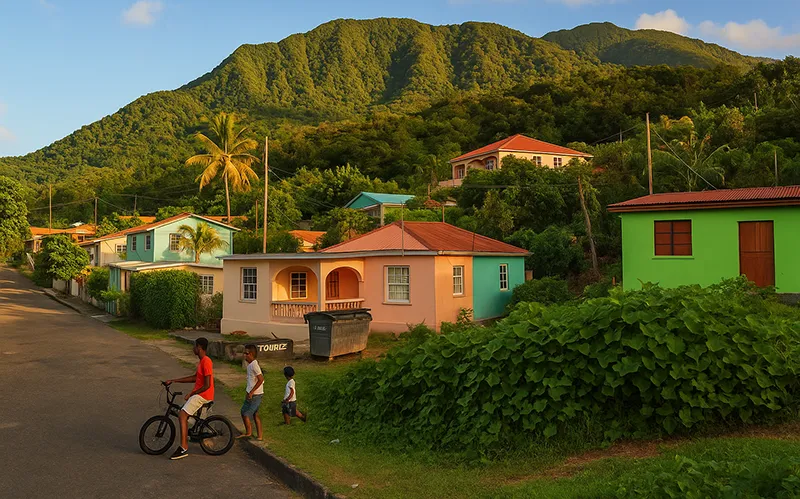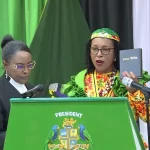Post-Maria Housing Study Shows Progress. But 63% of Homes Still Vulnerable

A new housing study presented at Dominica’s Resilient Housing Fair has revealed a mixed picture of the island’s post-Maria recovery. While government-backed initiatives and donor-funded programs have improved housing safety in several communities, the report shows that 63% of homes across the island remain highly vulnerable to future hurricanes and earthquakes.
The data comes from the Data and Systems for Resilient Housing Programs in Dominica project, a collaboration between the Ministry of Housing and Urban Development and Build Change. The study analyzed over 3,000 homes, finding that although vulnerability has decreased by 14% since 2017, the majority of homes remain structurally unsafe.
Speaking at the Bayfront in Roseau during Saturday’s housing fair, Minister Melissa Poponne-Skerrit acknowledged the urgency. “This study gives us a clearer picture. It shows where we’ve made strides and where the real gaps are. Our mission is to ensure no family is left behind.”
Key issues identified include weak roofing structures, inadequate elevation, and aging timber frames. The findings also pointed to increased risk in hillside and coastal communities, areas often hardest hit during storm events.
In response, the Ministry is expanding its housing retrofit program and launched the new Homeowners Manual, which offers user-friendly guidance on improving existing structures. It’s a step toward bridging the gap between knowledge and action, especially for families unable to afford full reconstruction.
Build Change technical representatives emphasized the importance of retrofitting. “We don’t just need to build new houses. We need to strengthen the ones already here,” said a field engineer. “That’s how we protect communities before the next storm season.”
To date, over 1,900 climate-resilient homes have been built, with an additional 250+ under construction. Still, many citizens continue to raise concerns about delays and incomplete projects. Government officials say they are listening and that the study will now inform better planning and prioritization.
The fair also featured financial institutions, construction experts, and climate adaptation agencies, offering solutions ranging from improved building materials to micro-financing. It was also an opportunity for the public to question officials and understand how national housing policy is evolving.
As Dominica continues toward its goal of becoming the world’s first climate-resilient nation, the report serves as both a milestone and a challenge. It shows that while progress is real, vulnerability remains high, and more work lies ahead.
The Ministry has committed to annual follow-ups and says the findings will now shape decisions on land use, building codes, and community investment. The housing journey may not be over, but the roadmap is clearer.
This article is copyright © 2025 DOM767




